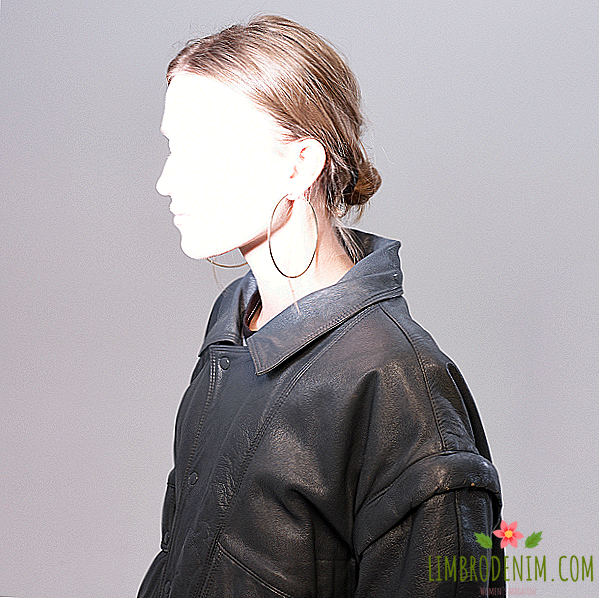From kangaroo to body armor: Women's inventions that made the world more comfortable
Science has long been considered a "masculine" sphere: women did not have access to education, which means they could not continue their scientific career. Contraception was also invented too late, which strongly distracted women from intellectual work. Nevertheless, women managed to leave a clear mark on science, and their inventions seriously changed our lives. Some of them relate to traditionally "female" activities - for example, a backpack-carrying for a child. But women are not limited to this, inventing more and wipers or fiber for body armor. We talk about ten inventions of women who deserve attention.

Windshield wipers
Wipers for the car came up with Mary Anderson, a resident of Alabama in 1902. During her trip to New York, she drew attention to how bad weather interfered with the trams and slowed down the traffic. The woman sketched the possible in a notebook
problem solving: janitor-bar, very similar to the modern, attached to the lever, which could control the driver. It was not the first such device, but the first device of this type that really worked. A year later, Mary Anderson received a patent for her invention, but then it did not arouse interest - mainly because there were few cars in principle. Ten years later, the situation changed, and wipers became widespread.
Dishwasher
Josephine Cochrane is the granddaughter of John Fitch, who created the first US ship. She came up with a dishwasher not out of practical necessity: the servants washed the dishes in her house. But Cochrane was annoyed that they often beat her expensive porcelain - she didn’t like to wash the dishes on her own, and she had a thought about the device: the dishes in it were kept on special shelves, and she was doused with water. Shortly after Josephine took the car, her husband died, and she fell into debt - in a difficult situation, she was forced to finish work faster.
Similar machines were tried to be created before, but Cochrane managed to make her invention commercially successful: she advertised the car in newspapers, founded her own company, selling cars to restaurants and hotels.

Kangaroo Backpack
In the 1960s, Ann Moore was a Peace Corps nurse in Togo: there she saw African mothers carrying their children in sling. Returning home, she wanted to carry her daughter the same way. At first, Moore tried to tie her daughter in the same way as African mothers did, but the child in a sling slid. Then, with the help of her mother, a woman sewed a special carrying bag in which
was to plant a child. This invention at first seemed a radical idea: passersby paid attention to the backpack and asked Moore questions.
Ann Moore did not advertise her invention, but it became popular - soon Ann Moore and her mother hired several more women to sew backpacks. Over time, the inventor improved the design and called it Snugli - she received a patent for a backpack in 1969. In the eighties, Moore and her husband sold the invention to Gerry Baby Products, which later changed the design considerably. In the late nineties, when they had grandchildren, Ann Moore and her husband created another carrier with a more modern design - Weego.
Wireless technology
Hedy Lamarr, an actress who was popular in the 1930s and 1940s, was also an inventor. Lamarr was married to Friedrich Mandl, an arms dealer — because of frequent meetings with his business partners, she began to understand military technology. During the Second World War, she managed to put knowledge into practice: together with the composer George Anteil, she patented a method of data transfer, allowing to protect information from enemy troops. He touched guided torpedoes: when the coordinates of the torpedo target were transmitted at the same frequency, the enemy could intercept the signal, drown it, or redirect the torpedo. Lamarr proposed synchronously changing the frequency of the rocket transmitter and receiver in accordance with a preprogrammed algorithm that the sender and receiver know. This cut the enemy's ability to intercept the data.
The inventors offered their find to the military, but they did not use it for many years. The invention of Lamarr was appreciated over the years: it formed the basis of many modern technologies and is used in mobile phones, GPS and Wi-Fi.

Marine signaling missiles
Martha Koston, the mother of four children, was widowed at the age of twenty-one - her invention helped her cope with the family tragedy. In one of her husband's notebooks, she found the idea of a system of signal rockets, which she then refined. Coston made signal
rockets that were comfortable and at the same time bright enough and shone long enough to transmit messages from ship to ship or to land. Later, Martha Koston sold the technology rights to the US military.
Kevlar - body armor material (and not only)
Chemist Stephanie Kwolek invented the technology that made it possible to create Kevlar, a high-strength and lightweight fiber, best known for being used in armor, for example, in body armor. Kwolek began working in the DuPont research lab in the 1960s, when there were very few women there; Fifteen years before her big breakthrough, she was an ordinary employee. The invention brought the company billions - although Kwelek herself did not receive any financial benefit from him: she transferred the rights to royalties from the use of the DuPont patent.
Stephanie Kwolek retired and stopped working at DuPont in 1986, after which she taught chemistry to high school students. Kwolek died in 2014 at the age of ninety.

Office Corrector
The thing, without which we can not imagine the work in the office, also came up with a woman. Betty Nesmith Graham worked as a secretary, and in her free time she drew and was interested in art. In the early fifties, Graham's office switched to electric typewriters, and
the woman found a way to correct mistakes and typos in the papers: she realized that they can be painted over the top, as the artists do. Nesmith Graham used water-based tempera paints and tinted them so that they matched in tone with the papers that were used in the company - this is how the first modern clerical touch appeared. The woman took the mixture with her to the office in a bottle, and the typos was painted with a brush. Soon, she began to make a mixture for other secretaries and called her "Mistake Out". A few years later, in 1956, she founded her own company with the same name - at first, her son and his friends poured the liquid in bottles. Due to the fact that the business took too much time, Betty Nesmith Graham was fired from her main job - and she concentrated on "Mistake Out". No wonder: in 1968, her company had already sold a million bottles of proofreader.
Microelectrode
The microelectrode was invented in the 1930s by an American physiologist Ida Henrietta Hyde, who was one of the first to use electrophysiology methods in the study of nerve cells. A microelectrode is a small device that stimulates a cell with electricity and measures its electrical activity. Ida Hide’s achievements do not end there: she was the first woman to do research at Harvard Medical School, and the first woman to be accepted into the American Society of Physiology — all of this, given that she only had the opportunity to get a university degree in biology. when she was thirty-one.

Convenient syringe
The medical syringe that Leticia Gere had invented and patented was not the first of its kind, but it is most similar to the syringes in their modern form: it is "a combination of a cylinder, a pump and a lever bent in such a way that it forms a pen." Gir
improved older designs, so that using a syringe it became possible to put injections with one hand, and not with two, as before. About the Gear itself, alas, nothing else is known.
Call Distribution Method for Call Centers
Erna Schneider Hoover studied medieval history, philosophy and mathematics, but her invention was her main achievement: she invented a call switching system that helped cope with overloading telephone lines. In the fifties of the last century, Hoover began working at Bell Laboratories Corporation: the company's telephone line was often overloaded and she needed to find a more efficient replacement.
In the hospital, where she was after childbirth, Hoover came up with a solution to the problem: she created a computer system that measured the number and frequency of incoming calls at different times and, depending on this, controlled the speed of receiving calls. Erna Hoover owns one of the world's first software patents.
Illustrations: Dasha Chertanova




